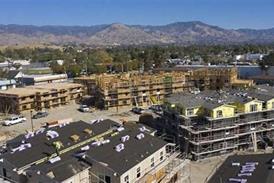Asian real estate funds are increasingly moving from opportunistic to core and value-added strategies, according to analysts at CBRE.
Asian funds have raised $4bn (€3.68bn) already this year, according to Henry Chin, head of research at CBRE Asia Pacific, on top of the $14bn raised in 2014.
During the 18-month period, he has observed a marked trend towards lower-risk and return strategies, he old IP Real Estate, moving away from the opportunistic funds that dominated the sector prior to the financial crisis.
“There are more and more core and value-added funds being raised,” said Chin, adding that it is a “huge change we have observed since the global financial crisis – there has been an increasing diversification into core”.
The $4bn raised by companies, including Pramerica, Baring Private Equity Asia and CLSA Capital Partners so far this year, refects continued momentum in Asian real estate fundraising, Chin said.
Earlier this month, Pramerica announced it had raised €480m for its Asia Property Fund III from German and Middle Eastern investors. The fund will invest across the risk spectrum, from opportunistic to core.
Invesco Real Estate continues to attract capital to its core, open-ended Asian fund – New Mexico State Investment Council is one of the latest investors to invest. A number of other fund managers, including JP Morgan Asset Management and SC Capital have launched open-ended core funds.
Some investors are watching the market with interest. Paul Jayasingha, senior investment consultant at Towers Watson, told IP Real Estate that core, open-ended Asian funds were an “unproven concept” and the consultancy was monitoring the market “from the sidelines”.
In its latest Global Alternatives Survey, Towers Watson said: “The establishment of new entrants could lead to institutions making more direct allocations to Asia in a core vehicle rather than higher risk private-equity-like vehicles.”
The report added: “This has been a difficult market for core products given the divergence in nature of underlying real estate markets and also the fact that institutional asset lot sizes tend to be quite high.
“Both of these factors have led to difficulties in core funds reaching critical mass.”
Ada Choi, senior director for Asia Pacific research at CBRE, said the abundance of core assets in Australia and Japan made the markets popular among investors, but he added that there was currently “a shortage of supply”.
As funds invest across the region, more investment is being seen in mature regional markets like New Zealand, Hong Kong, Singapore and South Korea, Choi said.
For exposure to China, investors usually prefer the first-tier cities of Shanghai and Bejiing, she said, although yields on Chinese real estate remain relatively low compared to Japan and Australia.
Alongside major global firms, a growing number of Asia-focused specialist funds are adopting single-sector and single-country strategies. “They are not going to raise a billion dollars, but they will raise $300-400m and will continue to be very successful,” Choi said.
Asia-based fund managers can leverage their “expertise and strength” in terms of local knowledge which would be “their key selling point,” Choi said.
According to CBRE Asia Pacific Investor Survey, which covers nearly 300 investors across this region, the percentage of investors who want to invest in core has increased from 29% in 2014 to 43% in 2015.
Topics
- Asia-Pacific
- Asset Allocation
- Baring Private Equity Asia
- Capital Raising
- CBRE
- Closed-ended funds
- CLSA
- Core/Core-plus
- Invesco Real Estate
- Investment Strategies
- Investment Vehicles
- Investors
- JP Morgan Asset Management
- Open-ended funds
- Opportunistic
- Pramerica Real Estate Investors
- Real Estate
- SC Capital
- Towers Watson
- Value-added








![CBRE Investment Management [Real Estate - Asia]](https://d15duu1h3gsd2d.cloudfront.net/Pictures/100x67fitpad[255]-90/P/Pictures/web/t/j/u/cbreimlogohorizoutlcleanedup01green_654324.jpg)
![Invesco Real Estate [Asia]](https://d15duu1h3gsd2d.cloudfront.net/Pictures/100x67fitpad[255]-90/P/Pictures/web/o/w/c/invesco_global_logo_blue_pos_rgb_682811.jpg)








No comments yet